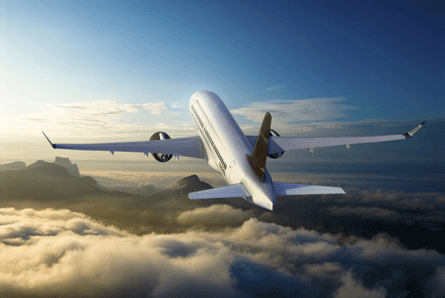A "window of opportunity" to replace ageing narrowbodies - particularly in North America - and offer a new generation aircraft in advance of competitors is helping to drive Bombardier's push into the small mainline airliner segment with its 110/130-seat CSeries aircraft. But as the Canadian airframer inches closer to launching the Pratt & Whitney GTF geared turbofan-powered CSeries, questions remain about production and assembly sites, and whether the projected order mass can be achieved.
Bombardier first revealed plans for the CSeries in 2004, but lack of a launch customer hindered the firm's efforts. Having taken a few years to hone the design, which now boasts 46% composites - the wing, empennage and aft-fuselage - and 24% aluminium-lithium alloy, as well as promising 20% better fuel burn, Bombardier recently received board approval to offer sales proposals to customers. A formal launch decision is expected by year-end to support an entry-into-service (EIS) of 2013.
"There is a market and this time the design looks much better. You have an opportunity here to get in before Airbus and Boeing, and possibly use the same technology," says Richard Aboulafia, vice-president analysis at Virginia-based Teal Group. The two airframers are eyeing a 2015 or later EIS for new-design narrowbodies.
Almost half of the CSeries's structure will be composite |
$250 billion market
Carving out a position in the 100/149-seat segment rather than tackling the 150-plus seat arena is key to Bombardier's strategy, which calls for the company to capture half of the estimated $250 billion market for 5,900 aircraft in this range. Most of the industry expects Airbus and Boeing to make their next narrowbody aircraft a bit bigger "to be able to cover well the territory from 150 seats up into the low 200s. So our strategy is to provide this optimised family just below this sector that Boeing and Airbus occupy today," says Bombardier president of new commercial aircraft programmes Gary Scott.
There is little doubt that demand is there, says Aboulafia, but he believes Bombardier faces a "problem" with supply. "Right now, Bombardier is spending about 1% of its sales [annually] on research and development and has for 20 years. By comparison, Airbus and Boeing are between 8% and 10%. I think there is a serious and legitimate doubt about their ability to bring the CSeries to market."
Development costs and capital investment for the CSeries will total $3.2 billion, including $2.5 billion in R&D (up from original $2.1 billion price tag) and $700 million in capital costs of building and facility tooling. Costs will continue to be spread three ways - a contribution split with the airframer, government and suppliers. But because key final production and assembly sites remain in question, it must still be decided if Quebec, the UK or the USA - or some combination of these - will make that one third investment.
Securing initial customers is crucial to the programme's launch. With a greener, more fuel-efficient single-aisle aircraft on offer from Bombardier, airlines are considering whether to initiate major fleet renewal now or hold off until a quantum leap in operating economics can be achieved in the latter part of the decade.
"We have had discussions with airlines worldwide, and we are confident that we have the right airplane at the right time and that we can sign one or two quality launch customers with initial orders of 50 to 100 aircraft," says Bombardier. Qatar Airways is considering an order for 20 of the type, it says, and the aircraft is also being studied by Lufthansa and International Lease Finance.
If the CSeries is to really succeed, however, North America "is where it is going to happen", says Aboulafia. American Airlines and Delta Air Lines are considering replacements for their Boeing MD-80s fleets, while Northwest Airlines is eyeing a McDonnell Douglas DC-9 replacement.
The CSeries is an ideal candidate for these operators, according to Bombardier. "It will really benefit airlines who have not had a good replacement option here before", allowing them to replace the DC-9s, MD-80s, and Fokker 100s "that have been guzzling fuel here the last many years and now at $100 a barrel is quite expensive", says Scott. In terms of passenger appeal, he adds, the CSeries fuselage width will be about half-a-seat greater than a five-abreast DC-9, but half-a-seat narrower than a six-abreast 737.
American has said that while it is "very supportive" of new technology efforts, it is really looking for a next generation narrowbody that will have an average of 150 seats. Long considered the likely carrier to launch the CSeries, Northwest has gone quiet on the issue.
Source: Flight International
























